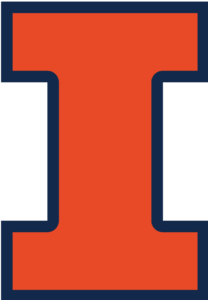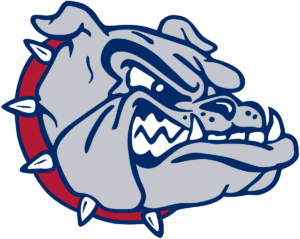Tag: College Basketball
What Sport has the Best Playoffs?
by The Cowl Editor on October 28, 2021
PCI
Providence College Investigates
Will Murphy ’23
Sports Staff
College Basketball
The playoffs are one of the most exciting aspects of sports, but one league stands out with the most exciting playoffs: NCAA Men’s Basketball.
There is so much to love about the NCAA Men’s basketball tournament, appropriately dubbed “March Madness.” Whether one enjoys Cinderella stories, heroic individual performances, or powerhouses squaring off, there is something for everybody.
Take the University of Baltimore County Maryland, for example, ranked as the 166th best team in the country entering the tournament in 2018, after winning their conference tournament to secure a bid. They were able to knock off the one seed, the University of Virginia, who was ranked as the No. 2 overall team in the country heading into the tournament. They were the first 16 seed in the history of the tournament to defeat a one seed, instantly becoming the Cinderella story of the year.
Some Cinderella stories continue up until the final weekend of the tournament, as was the case with Butler University in 2011. Butler was able to notch upset after upset as an eight seed in the tournament to reach the final game, becoming only the second eight seed to reach the final game since the tournament began.
Another aspect of March Madness that makes it so exciting is the capacity for an individual player to carry their team to unlikely upsets and capture the heart of the country in the process. Jimmer Fredette was able to lead Brigham Young University to the Sweet Sixteen, with his electric shooting range.
Stephen Curry also led a small school from North Carolina, Davidson College, to the Elite Eight in 2008. Curry led the tournament in points per game averaging an incredible 32 points per game and drawing the adoration and support from fans across the nation.
Finally, the powerhouse matchups in the Elite Eight and Final Four add another layer to March Madness. In one of the most exciting championship games in the history of sports, Villanova University took on the University of North Carolina in 2016.
The final possessions of the game proved to be one of the most memorable moments in the sport of basketball. After Marcus Paige of UNC sank a nearly impossible double-clutched three-pointer to tie the game at 74, the game seemed destined for overtime. That was until Ryan Arcidiacono pitched the ball back to Kris Jenkins who nailed a buzzer-beater to win the National Championship, in one of the best finishes to a championship ever.
From beginning to end, March Madness provides the most thrilling moments out of any playoffs in sports.
Justin Bishop ’24
Sports Staff
National Hockey League
Reaching the playoffs is the goal of every team in every sport, every season. To keep playing competitively after the regular season concludes is the only way to win a championship, and the hardest path to win a title out of any sport is, undoubtedly, hockey.
Few other sports have a playoffs composed of a taxing seven-game series that each team must go through in order to win their championship. In hockey, there are four rounds of this style of games, which means that a team must win 16 playoff games, no fewer, in order to lift the Stanley Cup. This is after playing a regular season of 82 games and having a top-three record out of a division of eight teams.
Basketball is the only other sport whose playoff season shares this concept, but hockey has proven to be a tougher sport to play than basketball. After each playoff series, one can only look at the injury report to see the unique circumstances that hockey players must fight through in order to win the cup.
Patrice Bergeron played games five, six, and seven of the 2013 Cup Final with a broken rib, torn rib cartilage, separated shoulder, and a pinhole puncture in his lung. Fans recognize this and appreciate the sacrifice of each player during their time playing.
The atmosphere at a regular-season hockey game is rivaled only by a college football game. If you are watching a playoff game, you know the stakes are high and players will put their whole bodies on the line in order to make a play for the advantage of their team.
Hockey fans recognize this at a different level than others and are the most passionate in sports. They increase the level of engagement in the playoffs by chanting louder, chanting more often, coordinating with each other specific chants targeted at particular players (most of the time it is the goaltender’s name).
The Nashville Predators have the most coordinated fans in the playoffs. The chant each fan participates in after a Predator goal is scored echoes throughout Bridgestone Arena, giving everyone chills down their spines. There are plenty of YouTube videos that showcase this specific chant among Predators fans.
Attending a hockey playoff game is an experience that cannot be described and can only be felt by going to one yourself. The energy, passion, and grit required by both a team in their fan base to lift the Stanley Cup makes it the greatest playoffs in all of sports.
Final Four Highlights
by Joshua Lopes on April 15, 2021
Sports
Men’s Final Four
By Leo Hainline ’22
Sports Staff
The 2021 NCAA Men’s Basketball Tournament featured one of the best Final Four games to ever be played when Gonzaga University defeated the University of California, Los Angeles. It then culminated with a worthy champion in Baylor University.
UCLA, an 11-seed that barely made the field of 68 and had to play in one of the first four games of the tournament, had been playing incredible basketball, knocking off both their region’s one-seed and two-seed during their journey to the Final Four. They brought that same energy and momentum into their matchup with Gonzaga and went back and forth with the Bulldogs all night.
The game was filled with iconic moments. One of the best during regulation was when Jalen Suggs blocked Bruins big-man Cody Riley from behind, before immediately following with an incredible bounce pass that sliced through the UCLA defense to find teammate Drew Timme for a slam dunk. Another big moment was Timme’s charge that he drew on UCLA star Johnny Juzang when the Bruins had an opportunity to win the game.
In overtime, Timme took over with unstoppable post-moves as the Bulldogs took a late five-point lead. However, the Bruins kept fighting and were able to tie the game thanks to a three-pointer from Jamie Jaquez Jr. and a put-back layup from Juzang. With three seconds left, Suggs received the inbounds pass, pushed the ball up the court, and pulled up to hit one of the most incredible shots in the history of March Madness.
That is when the luck ran out for the Bulldogs, however, as they were thoroughly outplayed by Baylor in the national championship game. The Bears were automatic from behind the arc and were clearly the more aggressive team on both ends of the court. Led by guard Jared Butler, the Bears brought a level of intensity that the Bulldogs were unable to match. In the end, Baylor took home their program’s first-ever national championship.
While this year’s tournament was undoubtedly a great one, the lack of fans in the arenas was a noticeable loss. The great moments, while still amazing to watch, could have been even more amazing with seats packed with people. Imagine: Gonzaga and UCLA playing in front of a packed Lucas Oil Stadium. Moments like that deserve to be watched in front of an audience, and hopefully, these special sporting events will soon begin to feel normal again with arenas and stadiums back at full capacity.
Women’s Final Four
By Liam Tormey ’22
Sports Assistant Editor
In a season unlike any other, the NCAA Women’s Basketball Tournament was, unsurprisingly, full of excitement.
All but one of the number one seeds were able to make it through to the Final Four of the tournament. The number one seed in the Mercado region, North Carolina State University, was defeated by Indiana University in the Sweet Sixteen. The three remaining top seeds in Stanford University, University of South Carolina, and the University of Connecticut all secured a place in the Final Four, alongside the University of Arizona.
Led by the winningest coach in Division I women’s basketball history, Tara VanDerveer, Stanford rolled through their opponents before their Final Four matchup with South Carolina. Prior to then, Stanford had secured victories against Utah Valley University, Oklahoma State University, Missouri State University, and the University of Louisville. South Carolina took care of their work just like Stanford. After dominating Mercer University, Oregon State University, the Georgia Institute of Technology, and University of Texas at Austin, the Final Four matchup between South Carolina and Stanford was set.
In a game which came down to the wire, Stanford was able to survive a gritty South Carolina team 66-65. Haley Jones led Stanford with 24 points and hit the game-winning jump shot. With five seconds left, South Carolina’s Aliyah Boston stole the ball and passed to Brea Beal. Beal missed a layup, but the ball fell back into Boston’s hand. However, her put-back also went off the back of the rim, giving Stanford the victory.
On the flip side of the bracket, UConn and Arizona met in the other semifinal matchup. Led by Paige Bueckers, the John R. Wooden Award winner, the Huskies were the likely favorite coming into the tournament. They steamed through the RiverWalk region, winning their first three games by 20 or more points before a close Elite Eight battle with Baylor University.
Arizona was the surprise of the tournament. Led by head coach Adia Barnes, Arizona made it through the Mercado region, upsetting Texas A&M University along the way.
When Arizona met UConn in the Final Four, the Wildcats gave them more than they could handle. Arizona pulled out a 69-59 victory, highlighted by Aari McDonald’s 26 points. A stunner of an upset, it ended the Huskies’ title hopes.
The championship game was everything one could have asked for, coming right down to the final seconds. Each team’s star player, including Stanford’s Haley Jones, who was named the tournament’s Most Outstanding Player, and Arizona’s Aari McDonald, stepped up on the biggest stage. Down by one with seconds to go, Arizona had the chance to win their first title ever, but McDonald’s three hit off the front iron, giving Stanford their first championship since 1992 by a score of 54-53.
PCI: Who Will Win The Final Four Most Outstanding Player Award?
by Joshua Lopes on March 18, 2021
PCI
Providence College Investigates: College Basketball
Ayo Dosunmu
By Margaret Maloney ’23
Sports Staff
The Illinois Fighting Illini Men’s Basketball Team abruptly appeared on everyone’s radar during the 2020-2021 Men’s Division I basketball season. This is largely because of one player who has emerged from his shell in his third year as a force to be reckoned with: Ayo Dosunmu. A Chicago native, the 6-foot-5-inch, 200-pound junior guard has created a name for himself by averaging 20.7 points per game and 6.3 rebounds per game, while shooting 48.8 percent from the floor.
Let’s recap Dosunmu’s freshman and sophomore seasons: in his freshman season (2018-2019), Dosunmu averaged 13.8 points per game, four rebounds per game, and had a field goal percentage of 43.5. He was named to the All-Big Ten Freshman Team and was an Honorable Mention All-Big Ten selection. He was also named Big Ten Freshman of the Week on multiple occasions.
In his sophomore season (2019-2020), Dosunmu averaged 16.6 points per game, 4.3 rebounds per game, and shot 48.4 percent from the floor. He was named to First-Team All-Big Ten while also being named Big Ten Player of the Week on multiple occasions. While Dosunmu’s numbers have increased since 2018, why has he all of a sudden been the talk of this year’s season?
The answer involves more than hard work and talent. Back in August 2020, a few months before the NBA Draft, Dosunmu was ready and prepared to take his talents to the NBA. But he had a realization that led him to withdraw. In a video Dosunmu posted on Twitter, he said, “Since [I was] a kid, I’ve been working, my dream is to play in the NBA. But first I need that national championship.”
This energy and determination that Dosunmu displayed many months ago fired up his entire team. Alongside Dosunmu are players like Trent Frazier and Andre Curbelo, who have equally matched Dosunmu’s strong desire to win a national championship.
However, the path to a No. 1 seed in the tournament has not been easy. Illinois’s most recent game against Ohio State was a tough test. The Fighting Illini beat the Buckeyes 73-68. This was the last regular season game before the start of conference tournaments, and it was also Dosunmu’s first game back after suffering a concussion and facial injuries.
Not only was Dosunmu ready to come back with a bang in his last regular season performance, a game in which he scored 19 points, but he was also ready to look the part. He donned a black face-mask, due to a broken nose, for that game and the conference tournament. Dosunmu tells ESPN that he is “into comic books and stuff. I feel like a superhero with a black mask on.” This superhero energy will help make Dosunmu the Final Four’s Most Outstanding Player as he leads the Fighting Illini on a deep run.
Jalen Suggs
By Leo Hainline ’23
Sports Staff
For the first time since 1997, the NCAA National Championship will come back to the West Coast as the Gonzaga University will complete a perfect season and win the program’s first-ever title. In 1997, when the University of Arizona did it, the team was led by five players who would eventually play in the NBA, two of whom had fantastic professional careers—Mike Bibby and Jason Terry. Gonzaga has multiple NBA talents on their own roster, but nobody stands out as a league-ready player like 6-foot-6-inch guard Jalen Suggs.
While he was not named the West Coast Conference MVP, an award that was given to his teammate Corey Kispert, Suggs is the X factor for Gonzaga. He is incredibly well-rounded and has no true weaknesses. His shooting is superb, he has NBA size and strength, he is quick and aggressive, and he can finish in traffic around the rim. If Suggs is on his game, Gonzaga will not only win, but will dominate against any team in the country, even against the other three top seeds.
Earlier in the season, the Bulldogs squared off against the University of Iowa at a neutral location in Sioux Falls, SD in what felt like a potential Final Four preview. While all the hype leading up to the matchup was about Hawkeye big man Luka Garza, Jalen Suggs stole the spotlight and put on a masterclass performance. He dropped 27 points, seven rebounds, and four assists, and was seven-for-ten from beyond the arc.
In Gonzaga’s most recent game, the West Coast Conference championship against Brigham Young University, the Cougars played a near perfect first half of basketball and had the Bulldogs on upset alert. The momentum of the game changed when Suggs took it upon himself to lead the team to victory. He asserted himself on both ends of the court and BYU’s 10-point lead became a 10-point deficit by the end of the game. Suggs’ best performances have all come against Gonzaga’s toughest competition—the University of Kansas, Iowa, and BYU—teams he may take on deep in the tournament.
Only five freshmen have ever won Final Four MVP, the most recent being Duke University’s Tyus Jones in 2017. Suggs has all the individual tools and the supporting cast to become the sixth. Gonzaga is long overdue for a national championship in college hoops, and while the program has produced phenomenal teams in the recent past, this Bulldog roster is the best the school has ever had. Suggs is currently a projected top-three pick in the next NBA draft, but do not be surprised if he becomes the front runner to be selected first after he leads Gonzaga to their first NCAA tournament title.
PCI: Who Will Win the Big East Men’s Tournament?
by Joshua Lopes on March 4, 2021
PCI
Providence College Investigates: College Basketball
Creighton University Will End Villanova’s Reign
By Jack Belanger ’21
Sports Co-Editor
After three straight Big East titles, Villanova University will likely be the favorites once again to be conference champions. If any team is going to end the Wildcats’ reign, it is going to be coach Greg McDermott’s Creighton University Bluejays. Outside the Wildcats, Creighton has the best combination of versatility and experience to make a deep run in the tournament.
The Bluejays are one of the most complete teams in the conference. The team has five players averaging over 10 points per game, led by Marcus Zegarowski, who is averaging 14.9 points a game. Center Christian Bishop leads the entire Big East in field goal percentage, shooting 70 percent.
Creighton’s team defense has played a huge factor in their success. Teams are shooting less than 40 percent against them as well as averaging 68.4 points per game. With all five starters standing between six-feet-two-inches and six-feet-seven-inches, the Bluejays rarely get caught in a mismatch. Where they lack in size they make up for in athleticism.
While they only average three blocks per game, Creighton is second in the Big East in steals, with 7.3 per game. The team does have one shot blocker in seven-foot center Ryan Kalkbrenner who can come off the bench when the team needs to protect the paint.
The Bluejays are one of the few teams that match up well against the Wildcats. In their first meeting of the season, Creighton won 86-70 with 25 points from Zegarowski. The team was hot from the three-point line, knocking down 46.2 percent of their shots. It was Villanova’s biggest loss of the season.
With five losses in the Big East, Creighton is far from a perfect team. They split their season series with Providence College thanks to center Nate Watson ’21 dominating the paint and a bad day behind the arc. While anything can happen in the tournament, what works in the favor of the Bluejays is they have an experienced team that is used to playing under pressure.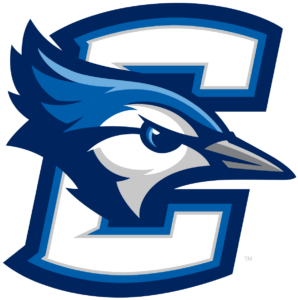
All of Creighton’s starters are juniors or seniors with experience playing in the Big East Tournament. With the cancelation of last year’s tournament, teams with freshmen and sophomores could be prone to mistakes when the game is on the line.
Even if they are not making shots, Creighton is one of the more disciplined teams in the conference. With the third best turnover margin, the Bluejays know how to protect the ball as well as create opportunities for themselves.
Everyone will be aiming to take down Villanova and end their reign as champs. Creighton is in second place for a reason. They can match up with the Wildcats better than anyone else and cover up their own flaws. After three straight titles, Villanova’s run will end thanks to the Bluejays.
Villanova Will Win Their Fourth Straight
By Liam Tormey ’22
Sports Assistant Editor
Villanova University has won the Big East Men’s Basketball Tournament four times in the last six years. This year, once again, the Wildcats will win the Big East tournament.
Currently one of the best teams in the country, as they sit at the top of the Big East standings, the Wildcats’ offensive firepower is going to carry them to a title. First things first: all of Villanova’s starting five is averaging double-digit figures. That five includes the reliable Collin Gillespie, alongside Jeremiah Robinson-Earl, Justin Moore, Jermaine Samuels, and Caleb Daniels. Any player in the group has the firepower to take over a game, and that will be crucial come tournament time.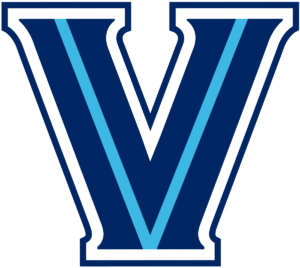
Gillespie, a battle-tested senior, has done it all in his time at Villanova and will be a major reason why the Wildcats will come away with another Big East title. This season, Gillespie is averaging 14.4 points, 4.7 assists, and 3.3 rebounds. A part of the 2018 Villanova National Championship team, Gillespie’s leadership will continue to be infinitely valuable to the team when they enter Madison Square Garden in March.
Sophomore Robinson-Earl has continued to show all year why he was ranked as an elite prospect coming out of high school. He is the Wildcats’ leading scorer this season with 15.5 points per game to go along with 7.9 rebounds. His season high this year was a 28-point game against Arizona State, but he has proven to have the ability to put up consistent numbers every game.
Another sophomore, Moore, has also provided solid scoring for the Wildcats. Averaging 12.8 points and 4.4 rebounds, Moore is a two-way guard who has continued to improve his game since arriving at Villanova.
Samuels and Daniels finish out one of the most complete starting fives in college basketball. Samuels, the 6-foot-7-inch senior, has shown his capability all year long. Averaging 11.1 points per game and 6.3 rebounds, Samuels can put up big numbers, especially after his 32-point performance in early February against Georgetown University. Daniels adds another 10.6 points per game for the Wildcats, rounding out the starting five.
The Wildcats do not have a deep roster of guys coming off the bench, but the capable play of players such as Cole Swider and Brandon Slater will be beneficial come tournament time.
Let us not forget about how great of a coach Jay Wright is, too. In his 20th year as the head coach of Villanova, Wright has won the Big East tournament four times, has been to the Final Four three times, and has won a National Championship twice. There is no question he will have his guys ready to play in the tournament, no matter who they come up against.
The Life and Times of John Thompson
by The Cowl Editor on October 29, 2020
Friar Sports
Looking Back on One of College Basketball’s Legends
by Leo Hainline ’22
Sports Staff
Legendary coach and former Friar John Thompson ’64 passed away in late August at the age of 78, leaving behind an unparalleled legacy.
Thompson was a pioneer in the game of basketball. He was the first African American to lead his team to an NCAA Tournament Championship, which he did in 1984 with Georgetown University. During his time coaching the Hoyas, Thompson completely altered the college basketball landscape. He helped the Big East become the most renowned basketball conference in the country. His passing is felt not just by Providence College and Georgetown University, but by the entire college basketball world. The passion Thompson brought in both helping his team succeed on the court and in helping his players succeed off the court is one of the greatest examples of embodying the Friar Family mantra.
Thompson grew up in Washington, D.C., where he was a standout basketball player for Archbishop Carroll High School. He would lead the team to three consecutive city championships. During his college career, Thompson was a star for the Friars, scoring 1,520 points and grabbing 1,061 rebounds in his four years. The big man led PC to the National Invitational Tournament title in 1963, and, as a senior, he was a First-Team All-American. He also helped bring the program to its first ever NCAA Tournament appearance. Thompson was drafted by the Boston Celtics, allowing him to play alongside the legendary Bill Russell. He won two NBA titles in his two-year NBA career.
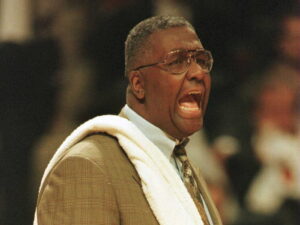
Following his playing career, Thompson returned to D.C. to become the head coach of the men’s basketball team and a guidance counselor at St. Anthony’s High School. Georgetown noticed his local success and hired Thompson as their head coach in 1972. He inherited a team that went 3-23 before his arrival. In just a few short years, he would drastically improve the program, making the Hoyas regulars in the NCAA Tournament.
Thompson changed the culture at Georgetown, as he built the program around relentless defending. He made sure his players gave it their all—both on the court and in the classroom. Thompson once famously said, “I don’t coach their team. They play on my team.” This philosophy turned Georgetown into one of the most dominant programs in the country.
Georgetown reached new heights in the early ’80s when Thompson was able to land the most sought-after recruit in the sport, Patrick Ewing. With the 7-footer protecting the paint, the Hoyas became a perennial powerhouse while elevating the standing of the Big East. In Ewing’s first year as a Hoya, the program fell just short of winning the NCAA title. They lost by one point to a Michael Jordan-led University of North Carolina team in what many consider to be an all-time classic.
Two years later, Georgetown was crowned the NCAA champion after defeating the University of Houston in the finals. After the game, when asked about being the first Black coach to win the NCAA title, Thompson responded, “I’m not interested in being the first or only Black doing anything because it implies that in 1984, a Black man finally became intelligent enough to win the NCAA title, and that’s a very misleading thing.” Thompson believed that any Black person could have achieved what he did if they were just given the chance. He also asserted that the most important part of Georgetown’s win was bringing a championship to the Mid-Atlantic region, which had not had a team win the NCAA Tournament in 30 years.
Under Thompson, Georgetown became known as one of the most aggressive, physical, and toughest teams in the country. They took pressure defense to a whole new level and set the tone for the rest of the Big East, which soon became known as the most physical conference in college basketball. Some loved them, some hated them, but Thompson’s team was unquestionably built differently than any other team in college hoops. They were everyone’s rival: everyone wanted to beat Georgetown.
Thompson was at the head of a trend that saw Big East coaches become not just coaches, but also important figures in popular culture. Thompson was passionate and vocal while coaching, and standing at 6 feet 10 inches, his presence was always felt, regardless of whether spectators were in the arena or watching the game at home. He was one of the original, great coaches of the conference, along with the likes of Jim Boeheim at Syracuse University, Rollie Massimino at Villanova University, Lou Carnesecca at St. John’s University, and P.J. Carlesimo at Seton Hall University. These men all set the precedent of the Big East having some of the country’s best coaches and the most captivating personalities.
Each coach had his own distinct flair and style. Thompson was especially known for defending his players when they needed him. In an 1983 incident, Thompson removed his players from the court during a game against Villanova until racist banners targeting Patrick Ewing were taken down. Thompson also limited player interviews to protect them from the media, which often skewed stories or sometimes portrayed the almost all-Black Georgetown roster in an unfavorable light.
Along with his success on the court, Thompson’s care for his players and those around him off the court was also unique. He understood that life was about more than winning basketball games. He treated the people around him with kindness and respect. Indeed, John Thompson’s Georgetown teams transformed college basketball. His program boosted the reputation of the Big East, which had the effect of turning college basketball into must-see TV for average Americans in a way that it never was before.
Not everyone can replicate Thompson’s coaching brilliance on the sidelines, but everyone can look to him to see how we can make a positive impact on other people’s lives. The world truly lost one of the all-time greats with his passing.
Father Brian J. Shanley, O.P., Talks Big East
by The Cowl Editor on March 5, 2020
Friar Sports
Bob Driscoll Joins in for Riveting Presentation
by Liam Tormey ’22
Sports Staff
Last Thursday, the Sports Business Organization at Providence College got the opportunity to hear Rev. Brian J. Shanley, O.P. and Athletic Director Bob Driscoll discuss the history of the Big East Conference and the influence that both men had on its formation.
To begin, both guests gave an overview of the roles that they have in sports at PC. Driscoll has been the athletic director at PC for 19 years and says his job is to “create the vision of what a first-class Division I department should look like.” He said that his role as athletic director would not be possible without the support of the president of the College, with that, of course being Fr. Shanley.
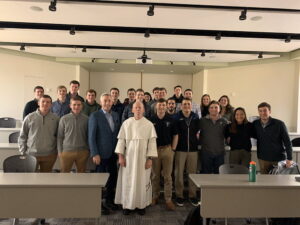
Fr. Shanley’s role at PC is far-reaching; however, and sports are a big part of his responsibilities. Fr. Shanley talked about the importance of “hiring smart people and letting them do their own thing.” He also spoke to the fact that he believes that if he needs to get into the “weeds” about someone, then that person is not doing their job. Although, he admits that has never found this to be the case at PC.
Next, Fr. Shanley and Driscoll were asked about both the history of the Big East and the realignment of the conference. The Big East originated in 1979. Fr. Shanley discussed the vision of Dave Gavitt, the former athletic director at PC at the time, and how he saw that northeast basketball was going to fall behind other major conferences unless something was done.
Indeed, in the early stages, many colleges wanted to join the Big East, and the conference had great success. However, the demise of the conference in past 10 years came as many of the big schools left to go to football conferences where all the revenue was.
Fr. Shanley spoke about the meeting at St. John’s University where all of the schools in the Big East got together to discuss how to fix this problem. At the meeting, it was decided that the Big East was going to “chart our own path individually of the football schools.”
A unique opportunity arose with the arrival of Fox Sports 1 and their need for a polished basketball product. The match between the conference and TV broadcaster ended up being perfect, as the Big East Conference received a 12-year contract with Fox which has “been a blessing,” according to Fr. Shanley.
Driscoll added that they were “in the right place at the right time” and “we went back to our roots” regarding the realignment of the Big East. The desire for schools to get into the Big East skyrocketed as presidents and athletic directors bombarded Fr. Shanley and Driscoll with calls to join the Big East.
Being able to play at Madison Square Garden for the Big East Tournament was also a huge boost for the conference. Both Shanley and Driscoll referred to it as “the Mecca,” saying the ability to have a long-term deal with MSG as the only conference in the country to play at the Garden was very important. Many major conferences still want to play at MSG, but the Big East is still the only conference able to do so, and that is huge from a marketing standpoint for the conference.
Fr. Shanley and Driscoll, were very excited to answer members’ questions about their role in forming the Big East Conference, and both believe the conference is in very good hands for years to come.
PCI: Should Students be Allowed to Storm the Court After Upsets?
by The Cowl Editor on February 27, 2020
PCI
Yes, They Should Be Allowed To
by Gavin Woods ’22
Sports Staff
In light of the recent Providence College Men’s Basketball Team victory over Seton Hall University on Feb. 15, many are questioning whether or not student spectators should continue to storm the court. However, I do not think that this instance should be representative of the policy. Storming the court after a big win is a staple of the college basketball experience and should be continued.
Part of what makes the Dunkin’ Donuts Center such a difficult arena for opponents to face is because the PC crowd is so vocal. The best way to measure a crowd’s effect on the game is to look at how it affects the home team’s performance. Head coach Ed Cooley commented, “I’d be remiss if I didn’t talk about how great our crowd was tonight. Our crowd helped us win this game, no question about it. I don’t know what they fed them in here tonight.”
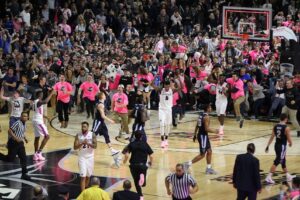
It was exactly this intense excitement that the student section showed for their Friars that made them want to celebrate this conference win. Coach Cooley offered his perspective on the premature court storming: “I know it got out of hand at the end when they thought the game was over. Hopefully we won’t get fined for that. But if we do… I’ll pay for it. It’s worth it if we’re winning.”
When Alpha Diallo ’20 was asked how the sold-out crowd at home made him feel, he replied, “It was a great moment. The storming the court is always fun, especially for the young guys. It was a great atmosphere and we fed off of it for sure.”
Banning the act of court storming would discourage the crowd’s participation. Big wins do not happen often and when they do, students should have the opportunity to celebrate with their fellow classmates. The student body should be free to celebrate with the team however they see fit, so long as it does not interfere with the game as it did this past Saturday.
Storming the court is a longstanding college tradition that has, in some cases, been deemed an essential part of the college experience. To deny students the opportunity to do so takes away the ability for students to make memories of a situation they may never find themselves in again. To put a limit on their celebration is to essentially remove students from the game, which already confines them to mere spectators. Lastly, to reiterate what Diallo said, storming the court not only energizes the fans, but also the players because they feed off the excitement in the stadium and it can be a motivating factor for the team going forward.
Therefore, storming the court, when done correctly, should be allowed because both the fans and players love it. It is a great sports tradition that brings players and fans together.
No, It’s Too Dangerous
by Eileen Flynn ’20
Sports Staff
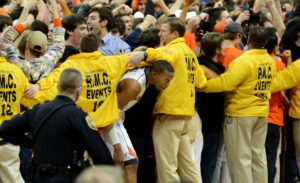
With unexpected outcomes comes unexpected celebrations, and for college basketball an upset at home usually calls for the students to storm the court at the final buzzer.
What might seem like harmless excitement at first can actually turn into mayhem on the court. In addition, large fines can be placed on the institution itself. Some might argue to “let the kids play,” but there have been incidents in the past that should convince any school or league to ban fans from storming the court, with no exceptions.
Student fan sections during the game are expected to get rowdy. Indeed, they are responsible for cheering their team on when it is on a roll, as well as in charge of picking their team up when they need some momentum. Chants, signs, and themed outfits are all encouraged and express the crowd’s commitment to their school’s team. Rushing the court, however, creates a dangerous situation for students and players that can be completely avoidable.
One of the worst cases was in 2004, when a promising high school basketball player, Joe Kay, helped his team beat their rival school with a game-winning dunk. The high school students, who had watched college court storms all their lives, were ready to celebrate the same way. Unfortunately, Kay was a victim of the chaos, being thrown to the ground before suffering a stroke which would later paralyze him on his right side.
The Southeastern Conference and the Big East have started to implement fines for teams that continue to storm the court even after being advised not to do so. However, this does not seem to stop students. A University of South Carolina announcer warned the Gamecock fans prior to their upset victory against University of Kentucky that if the students were to storm the court, the school would be fined up to $50,000. The students charged the court anyways, leaving their school to pay the large fine.
Providence College students are all too familiar with rushing the court after their basketball team comes up with an unexpected win. This season, the team was 0.2 seconds away from beating Seton Hall University, who was sitting first in the Big East and ranked tenth nationally. With an unexpected foul, the students started rushing the court even though the game had not yet ended. Embarrassing the team and the school, the students took their time walking off the court. Providence College was issued a $5,000 fine for the unnecessary fiasco.
How do you distinguish which victory deserves a court storming? Many PC students decided the game was not worthy of storming the court and stayed in their seats at the end of the game, which was a good thing.
Storming the court is not going to get any safer, it embarrasses the school, and in the end, is just not worth it.
Editor’s Corner: New NCAA Rule Can Be Harmful to Student-Athletes
by The Cowl Editor on November 7, 2019
Friar Sports
by Meaghan Cahill ’20
Sports Coeditor
The issue as to whether or not college athletes should get paid has been a heavily debated topic in both the sports and academic worlds. On Oct. 29, the NCAA started the process that will answer the question once and for all.
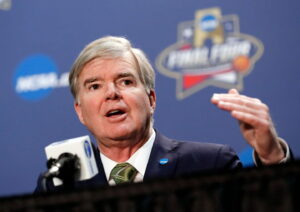
The NCAA’s top governing board voted unanimously to permit the 460,000 students participating in collegiate athletics the opportunity “to benefit from the use of their name, image, and likeness in a manner consistent with the collegiate model.”
This decision comes just weeks after the NCAA called California’s Senate Bill 206 “Fair Pay for Play Act”—which calls for student-athlete compensation and representation from both state and private universities—“unconstitutional” and an “existential threat.”
On the initial motions to put this new rule into effect on college campuses across the country, NCAA President Mark Emmert said, “The board’s action…creates a path to enhance opportunities for student-athletes while ensuring they compete against students and not professionals.”
Adamant that the student-athletes are not to become employees of the schools at which they play, the NCAA’s new rule only allows student-athletes to enter into contracts for merchandise and endorsements; they are in no way allowed to be paid for their athletic performance in efforts to keep up with the amateur aspect of college athletics.
However, it can be argued that despite the attempts made by the NCAA, all amateur aspects of play have been wiped off of the table with an alarming force, and, while the intent is to enhance the student-athlete experience, the new law will become nothing more than a hinderance on their collegiate career.
To expand upon Emmert’s words, student-athletes will be competing against professionals. Typically, the athletes that big-name companies look to endorse and create merchandised gear for are the ones who they believe have the best shot at a professional career. No longer will athletes be looked at as amateurs, but, rather, the ones who are able to attract deals off of their name, image, and likeness will be singled out more so than they most likely would have been prior to an endorsement deal.
Due to this professional mentality that will naturally arise, the experience of the student-athlete is put at risk because the pressure on them to perform well will only be intensified. While they may not be making deals based on their actual play, it is their playing skills that will get them recognized by any type of company. There is a great risk for high levels of stress amongst student-athletes because now, not only will they have to perform well for the team to win, but they will have the added pressure of performing exceptionally well each game so that they do not lose whatever endorsement deals they may have struck.
While much of the law still has to take a clear, definitive shape, there are already too many issues that can (and will) arise with its implementation. Instead of conforming to California’s Senate Bill, the NCAA should maintain their initial response and look to protect all of their student-athletes from the dangers that this new law can impose on them.
The Cowl’s Second Annual March Madness Bracket
by The Cowl Editor on March 21, 2019
Sports
The Cowl’s Sport Staff Has The Tar Heels Upsetting Rival Duke
by Jack Belanger ’21
Sports Coeditor
Members of the sports staff came together to create The Cowl’s Second Annual March Madness Bracket. Thanks to Cam Smith ’21, who gave his analysis for the South Region, Scott Jarosz ’21 for the East Region, and Sullivan Burgess ’20 for the West Region, and to everyone for helping make the picks. I took on analyzing the Midwest Region, Semifinals, and Finals.
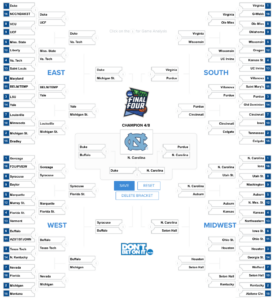
South Region:
The South Region features the University of Virginia as the top dog, and the Cavaliers will be looking for revenge following last year’s disastrous first round loss to the University of Maryland Baltimore County. Also in the South is the University of Wisconsin and Purdue University, two veteran squads poised to make deep runs. The Boilermakers will in fact ride star shooting guard Carsen Edwards all the way to the Final Four, as they will knock off top-seeded Virginia in the Elite Eight. This minor upset may very well be overshadowed by the two major ones set to take place in the first round. The University of California Irvine, coming into the tournament scorching hot and on a 16-game win streak, will take down Kansas State University, a team that will likely be without All-Big 12 forward Dean Wade. Not to be outdone, the Colgate University Raiders out of the Patriot League will stun the University of Tennessee, an upset that is sure to bust brackets across the country.
East Region:
The East Region features some very intriguing matchups, as well as numerous potential upsets. One such matchup that could be interesting is the University of Maryland versus Belmont University. Coming off an 80-71 win over Temple in its First Four game, Belmont is a team that should not be taken lightly. The Bruins boast a record of 27-5 and could very well upset Maryland in the first round. Another East Region matchup worth watching is LSU vs. Yale. Yale has played well as the underdog in the past, beating #5 seed Baylor in a first-round game back in 2016. If Yale can upset LSU, it can very well take down Belmont and advance to the Sweet 16. Although Yale could make a run in the East, it is hard to see them upsetting Michigan State. For the matchup in the East Region Final, we have Michigan State and Duke. Given that Zion Williamson is back and fully healthy, it is hard to see Duke being stopped by anyone in the East.
West Region:
In the West Region of the March Madness Bracket, Buffalo University, the sixth seed, will find their way into the final four facing against the #1 Duke University. Buffalo finished first in the MAC East at an overall record of 31-3 and are highly favored this year to even win it all. Syracuse University will also find a spark that usually occurs when they enter the March Madness tournament and will make a run until they face Buffalo in the Elite Eight. One highly anticipated matchup is Marquette University and Murray State; while Murray State may have the best player in college basketball, Marquette has the better team that will defeat Murray State, but will lose to the ACC Championship runner-up Florida State University. Lastly, Michigan University, who has been hot all season, will come to face Buffalo in the Sweet 16, yet Buffalo will find themselves favored to make their way to the Final Four.
Midwest Region:
With the likes of the Universities of North Carolina, Kansas, and Kentucky, the Midwest Region is full of blue-blood programs that know how to make deep runs into the Final Four. Out of the three programs, the Tar Heels have the easiest road to the Final Four and are one of the most balanced teams in the country. After winning their first game, Kentucky is going to fall to a red-hot Seton Hall University team, who took Villanova to the final seconds of the Big East Finals and had a chance to win the game at the buzzer. A potential first-round upset to look out for is Ohio State University over Iowa State University. The Buckeyes played in a much tougher conference this year, while Iowa States’s defense has been questionable. Also, first-year head coach Chris Holtmann had plenty of experience in the tournament when he coached for Xavier University.
Semifinals:
Syracuse will force the Blue Devils to shoot the three, which will keep the game close early, but Duke has simply too many weapons to be stopped in the second half. Once Duke begins to build a lead, Syracuse is going to have a tough time keeping up to make shots.
The other Semifinal game will feature a back and forth game between two teams who can score in a variety of ways. While Edwards will do everything he can to keep Purdue in the game, the Tar Heels will dominate inside the paint which will prove to be the difference, sending UNC to the finals.
Finals:
Duke may be the favorite to win it all, but UNC has been their kryptonite this season. The Tar Heels have beaten the Blue Devils twice during the regular season and played tough in the ACC finals. The Tar Heels have enough size inside to match up with Williamson and slow down Barrett and Reddish on the outside. Do not be surprised when you see UNC win their second title in three years.
PCI: Who Will Win the Final Four’s Most Outstanding Player?
by The Cowl Editor on March 21, 2019
PCI
Kyle Guy of Virginia Will Take the Award
by Scott Jarosz ’21
Sports Staff
One obvious frontrunner to win this year’s Final Four Most Outstanding Player, is certainly Duke University’s Zion Williamson. The 6’7”, 285-pound player attracted the eyes of basketball fans nationwide when videos of his athletic dunks in high school games went viral. In his first season at Duke, Williamson has averaged 22.1 points per game along with 8.9 rebounds per game.
While Williamson has excelled in his first season of collegiate basketball, he has shown some signs of immaturity as well as inconsistency. The same goes for the rather young Duke basketball team as a whole.
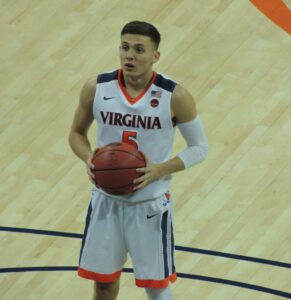
However, one experienced player who has been a consistent leader for his team is University of Virginia’s Kyle Guy, a veteran guard who has been truly playing up to his full potential this year. With his experience and excellent ability to score points, Guy will ultimately be named the 2019 Final Four’s Most Outstanding Player.
In the 2018-19 season, Guy has averaged 15.6 points per game, which is the highest on his team. While this figure may not be as impressive as Williamson’s 22.1 points per game, Guy’s presence has arguably had a larger impact on his team’s overall success. Virginia sits atop the leaderboard of the Atlantic Coast Conference with a record of 29-3 overall and 16-2 in conference. Behind Virginia on the leaderboard is the University of North Carolina and Duke. Virginia is currently ranked as the #2 team in the country, and despite a 59-69 loss to Florida State University in the ACC Tournament, they have shown no signs of slowing down heading into the NCAA Tournament. Virginia has been selected as the #1 seed in the South Region for the NCAA Tournament, and they are scheduled to play 16-seed Gardner-Webb on March 22 in Columbia, South Carolina. The question remains, what is guard Kyle Guy capable of doing that could not only lead his team to an NCAA Tournament victory, but will earn him the title of the Final Four’s Most Outstanding Player?

